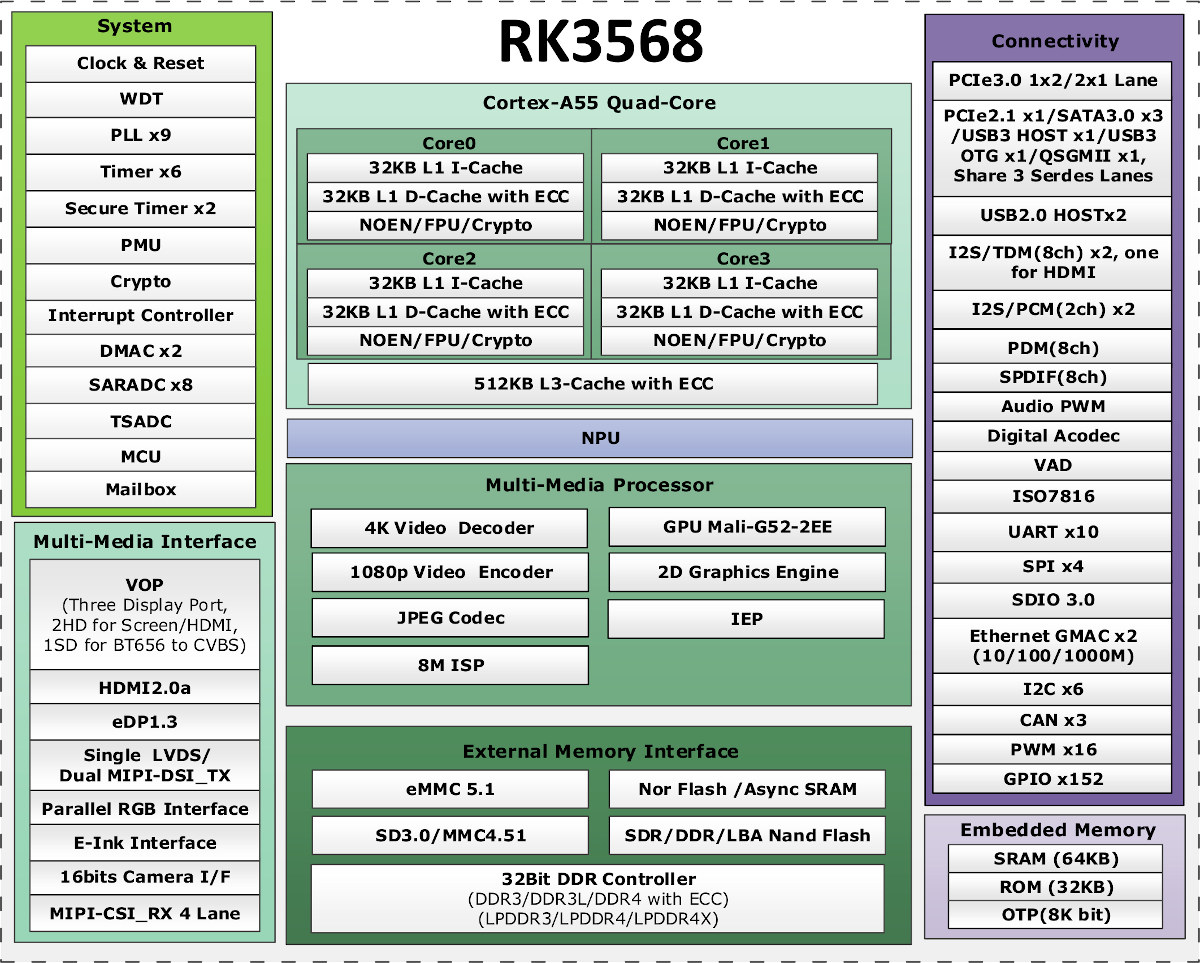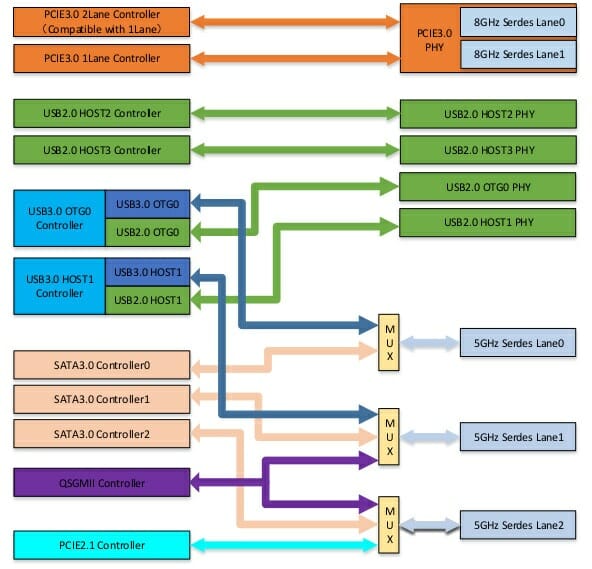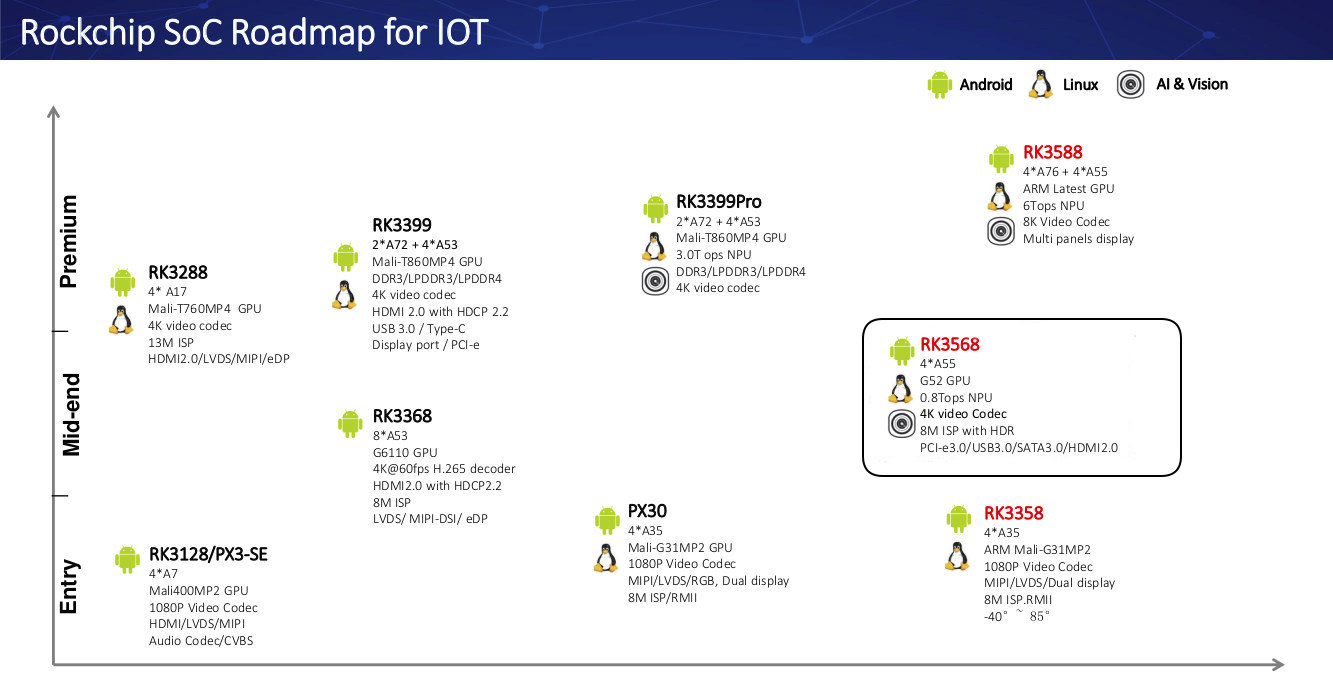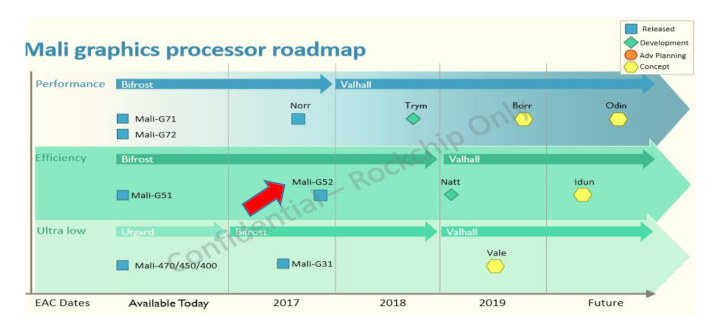We recently reported on the Rockchip developer conference (RKDC) 2020, and especially the upcoming Rockchip RK3588 Cortex-A76/A55 processor that packs a lot of power and features, and is now scheduled to launch in Q3 2021.
But as you can imagine there were other products revealed during the conference, including the new Rockchip RK3568, similar to the previously announced RK3566, and designed for edge computing and network video recorder (NVR) applications.
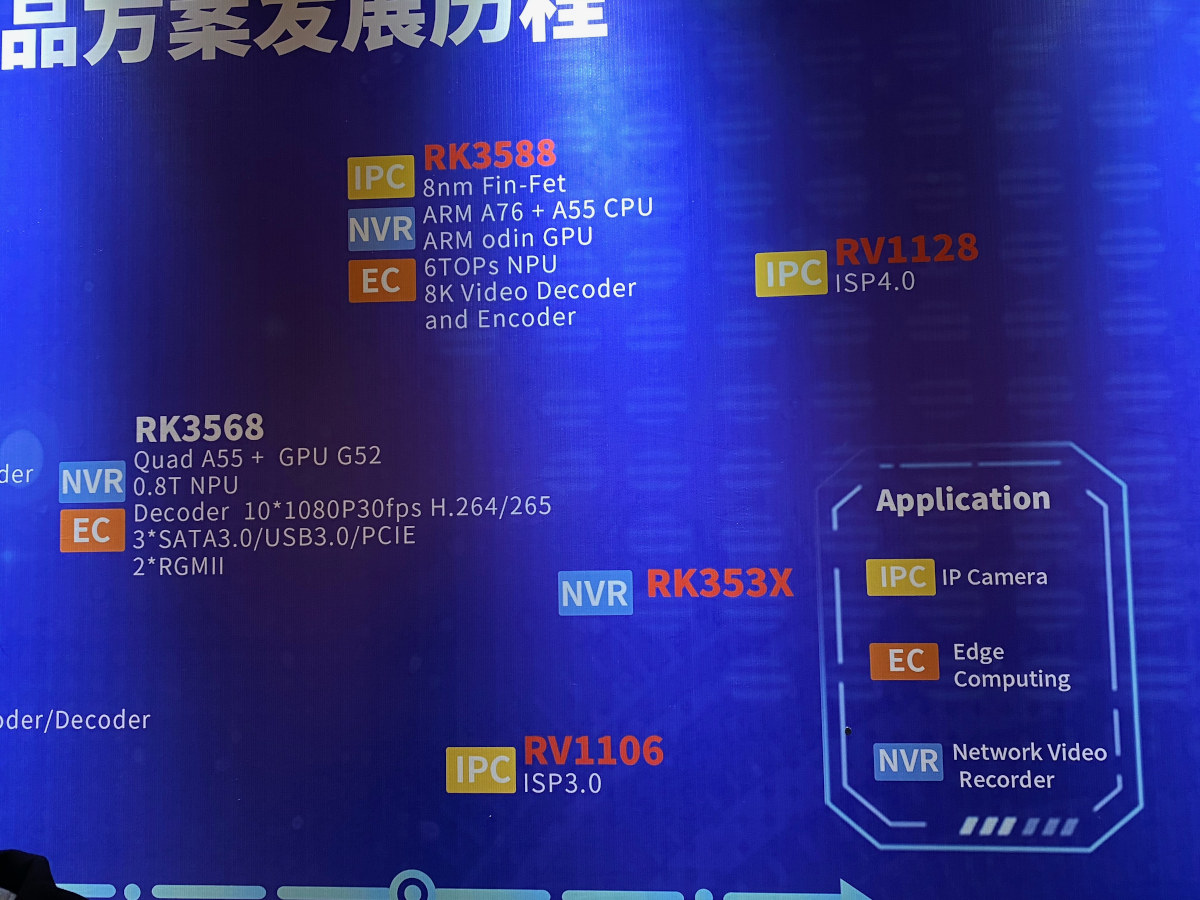
CNX Software managed to obtain the presentation for the RK3568 processor from the conference so we’ll focus on the quad-core Cortex-A55 processor in this post.
Rockchip RK3568 specifications:
- CPU – Quad-core Cortex-A55 processor with NEON and FPU
- GPU – Mali-G52 EE with support for OpenGL ES 1.1 to 3.2, Vulkan 1.1, OpenGL 2.0
- AI accelerator – 0.8 TOPS RK NN accelerator @ up to 800 Mhz with 512x INT8 MAC, 128x INT16/FP16/BFP16 MAC
- Memory I/F – 32-bit DDR4/DDR3L/LP4/LP4x with ECC support
- Storage I/F – Nor SFC, SPI NAND, eMMC 5.1 , 3x SATA 3.0*, 8K OTP
- Display I/F – RGB, LVDS or MIPI DSI, HDMI 2.0a, eDP 1.3, e-Ink
- VPU
- Video decode – 4Kp60 H.264/H.265/VP9
- Video encode – 1080p60 H.264/H.265
- Camera
- 8M ISP with HDR
- 4-lane / 2x 2-lane MIPI CSI2 @ 2.5 Gbps per lane
- 16-bit DVP camera support with BT.656/601/1120
- Audio
- 8-channel I2S/TDM, 2x 2-channel I2S
- 8-channel PDM
- S/PDIF out
- Networking
- 2x Gigabit Ethernet (GMAC)
- Quad serial gigabit media
-independent interface (QSGMII)*
- USB – USB 2.0 host, USB 2.0 OTG, USB 3.0 OTG*, USB 3.0 host*,
- Other interfaces and peripherals
- 3x SDIO 3.0
- PCIe
- PCIe 2.1 1×1 lane*
- PCIe 3.0 1×2 lane or 2x 1-lane @ 8 Gbps
- 10x UART, 4x SPI, 16x PWM, 6x I2C, 3x CAN FD, 8x SAR-ADC
- Security – SM3/4 cipher, TEE, Arm Trustzone
- Package – TBD
- Process – 22 nm
* USB3.0 OTG, USB3.0 HOT, SATA3.0, PCIE2.1, QSGMII are all multiplexed via
three Serdes lanes @ 5 GHz as shown in the diagram below.
Rockchip will provide Android and Linux BSPs for the AIOT processor, and the AI accelerator will support Caffe, TensorFlow, TF-Lite, ONNX, PyTorch, etc.. through the RKNN Toolkit already used by Rockchip RK1808 and RK3399Pro.
RK3568 is extremely versatile and Rockchip expects it to be found in NVRs, cloud terminals, IoT gateways and industrial control applications, car infotainment systems and dashboards, and even Karaoke machines.
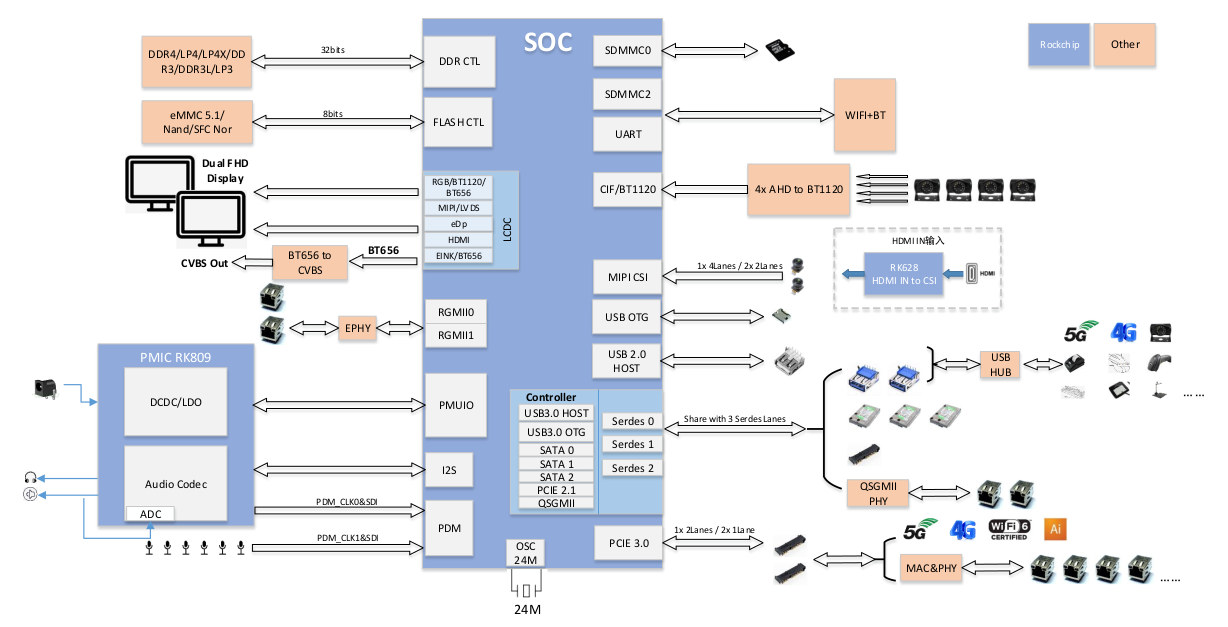
I was also informed that RK3566 specifications had changed a bit since the last announcement/leak in February, and now closely match RK3568 specifications except for the lack of PCIe 3.0 interface, and a smaller number of IOs. Both RK3568 and RK3566 are sampling now, and are sold as mid-range parts as shown in the Rockchip IoT SoC roadmap below which also reveals the new entry-level RK3358 quad-core Cortex-A35 processing coming soon.
Those who follow RK3588 leaks history may remember the processor was first unveiled with an Arm “Natt” GPU, and in our recent story update, it got an upgrade to an Arm “Odin” GPU. Those are yet to be released Arm Mali “Vaxhall” GPUs, but a slide in the presentation show Natt is the successor of the mid-range Mali-G52, while “Odin” GPU are parts of the high-performance GPU such as Mali-G72…

Jean-Luc started CNX Software in 2010 as a part-time endeavor, before quitting his job as a software engineering manager, and starting to write daily news, and reviews full time later in 2011.
Support CNX Software! Donate via cryptocurrencies, become a Patron on Patreon, or purchase goods on Amazon or Aliexpress


